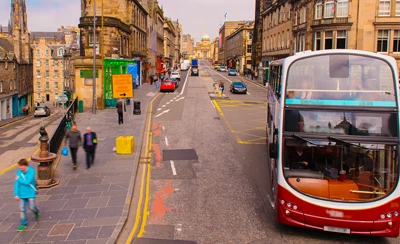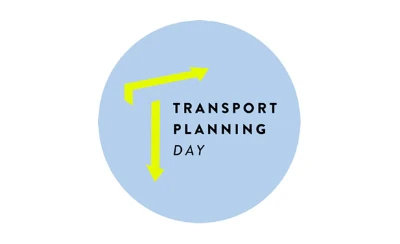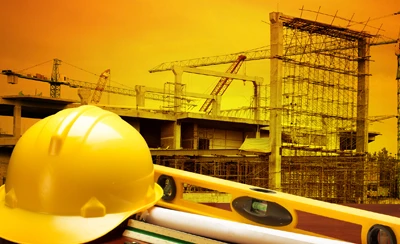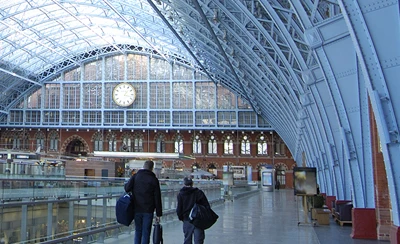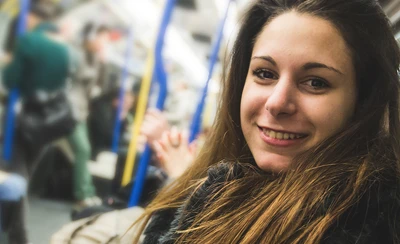TP Day Campaign 2021: Addressing Safety as Part of Inclusive Transport
Nichola Byrne, 21 June 2021
Nichola Byrne is an Associate Transport Planner at WSP based in Birmingham.
Summary
There has been significant advances in inclusive, safety design in UK transport projects in recent years, including advances in technology, greater focus on inclusive design in policy and guidance, and funding opportunities. However, there is still progress to be made, to support and encourage everyone to travel safely with confidence across the UK's transport network.
Earlier this year, I was asked to write a blog for the Transport Planning Society, as part of the campaign running up to Transport Planning Day on 15thNovember 2021. This year’s Transport Planning Day theme focuses on equality, diversity and inclusion, thinking about the challenges people still face in accessing the places and services that they need to, and the opportunities to address such barriers.
What’s the issue?
At the time I was asked to write the blog, there was a lot of discussion around women’s safety related to transport. It was shortly after the murder of Sarah Everard which saw women protest for safety on the streets, and Prime Minster Boris Johnson promising that the Government would do ‘everything they can’ to improve security and make the UK’s streets safer for women. This resulted in an additional £25 million of Government funding announced for the Safer Streets Fund, focused on supporting safety in public spaces for all, with a particular emphasis on women and girls[1].
Although there has been an increase in discussions, funding and recognition of the need to improve women’s transport safety over the course of the last year; this isn’t a new issue. As a Birmingham resident, one incident that stands out in my mind is that of a Birmingham 16-year old girl who was fatally stabbed in a random attack on a rush-hour bus as she made her way to school. I remember that the press reported that the young girl had tweeted a few weeks before her death about someone’s behaviour worrying her on the bus, as they were moving around and sitting in different seats.
What’s been done to date?
There have been several advances in the UK’s response to transport safety in recent years, such as the See it. Say it. Sorted campaign on rail services.

The campaign started in 2016 and saw in a 365% increase in texts and calls to British Transport Police, relating to suspicious circumstances on transport services[2]. Yet, avoidable crimes still continue to take place nationally on our transport network.
It should be noted that the link between equality, diversity and inclusion, and safety in transport is not exclusive to the challenges and issues of women. Women form part of one case study in the complex web of social groups facing barriers to travel choices as a result of safety and security concerns. This suggests that there is still a long way to go to increase safety and inclusive confidence for all people, to use all modes, at any time of the day or year, across our transport network.
Technological advances will help to mitigate some of these challenges going forward. For example there was a surge in downloads of safety apps like WalkSafe following the death of Sarah Everard. The emergence of demand responsible transport (DRT) provided by operators such as ArrivaClick also provides greater safety opportunities, where you can book a seat and are provided with information about the driver and route, as well as being able to gather a traceable record of all other passengers. However, the constant evolution of technology is likely also open up new challenges as new ways of moving and connecting make it more difficult to achieve longevity in inclusive transport safety solutions.
What do we need to consider?
Infrastructure
The examples of safety apps and DRT show that there are digital opportunities to improve safety and security through information sharing. However, fundamentally at the heart of transport safety barriers is infrastructure. This includes infrastructure across all surface modes – walking and cycling routes, as well as public transport, private vehicles, and going forward the addition of new emerging technologies. As part of end-to-end journeys, users may need to navigate several modes, including interchange points. There is a need to feel safe and secure across all parts of all journeys. If not, this will impact our modal choice, but could even go as far as to discourage some people from travelling at all.
Positive steps are being taken to embed inclusive design in projects going forward. For example, the current update to Manual for Streets is taking a human centric approach to design to improve existing streets and develop new streets within developments[3]. The updated Manual for Streets will consider personal safety and the characteristics of streets to support sustainability, public health, inclusion, the economic development of centres and freight systems, whilst delivering positive outcomes for communities.
Transport safety is a global issue and transport operators across the world are introducing a variety of measures to combat the perceived and actual dangers of travelling by public transport. In 2017, I visited Rio de Janiero with a friend and used their underground metro services to explore the city. As the service entered the station, I entered a female-only ‘Vagão Rosa’ pink carriage (introduced in 2006 after concerns about sexual harrassment of women on metro services). Similar services are also provided in other parts of the world, such as Japan, to combat ‘chikan’ sexual harrassment issues and Jeremy Corbyn previously discussed the potential for similar services to be provided in the UK. However, my personal experience on the female-only carriage was not one of comfort and a safe haven, but actually feeling more like a larger target in carriage full of women. It didn’t feel progressive to segregate space by gender rather than addressing the root cause of why such harrassment and crime takes place in the first instance. I also struggled with the assumption that a female-only carriage seemed to identify men as the primary cause of public transport safety, but in reality the majority of men cause no concerns and could also be subject to harrassment themselves.
Impact on travel choices by time of the day (or night)
The majority of transport projects require some level of evidence collation for schemes including transport modelling scenarios. Transport guidance often focuses on AM and PM peak periods, as such mainly considering commuter and school trips[4]. Albeit these periods are often some of the busier times of the day with greater demand for transport services, it seems that there is a danger that transport planners are developing peak period designs that exclude the needs of off peak user groups. Such user groups include the UK’s 3.4 million night workers (those who work for at least three hours between 23:00 – 06:00)[5], include a significant proportion of women who predominantly work in care and nursing professions[6].
To a similar degree, from the consumer’s perspective; our night-time economy outside of London is currently predominantly accommodated for by private vehicles and taxi services. Other UK major cities, such as Greater Manchester, are looking to increase 24-hour public transport service provisions, using best practice from European cities such as Milan and Berlin. Such service extensions would need to include specific considerations for the needs of off-peak user groups, including their safety concerns. Part of the process to understand and develop these scheme considerations would be through stakeholder engagement and public consultation, with the aim to engage with as many disparate user groups as possible through the right communications channels.
The focus of transport design on peak period evidence is likely to focus on daylight activities, with the exception of standard design considerations, such as street lighting. This is likely to give limited thought to wider temporal factors, such as seasonal variations and weekend needs, which again will impact travel choices. WSP’s ‘Can We Fix the Gap wiith Future Ready?’ (2021), states that 50% of surveyed women often changed their mode of travel to whether there is street lighting, yet 61% of surveyed men never changed their route due to anxiety or fear. This highlights the role of infrastucture and asset management, and how the impact of perception can differ between social groups.
Rural and Urban
In addition to the temporal differences of safety on travel choices, there is also diversity by space and place. The design of transport interventions and strategies needs to differ, particularly between rural and urban areas, due to their different demographics, socio-economic activities, terrains and wider physical constraints. The Department for Transport acknowledges that residents in rural areas continue to be dependent on private cars for mobility, which needs to change, hence the development of the Future of Rural Mobility Strategy[7]. Modes like DRT may provide the opportunity to further support safety, where more direct services can be booked, having a particularly significant impact in rural areas.
There tends to be a lack of active travel infrastructure, including safe walking and cycling routes, between towns, villages and hamlets villages in rural areas. In addition, there is often limited direct, frequent/reliable public transport services leading to unknown waiting times in remote areas which consequently pushes users to private vehicle use.
Rebalancing and Levelling Up
In recent years, the Department for Transport has acknowledged that there is a need to rebalance and level up across the nation to sustain a more socio-economically equal UK. At this stage, guidance and funding opportunities appear to be more focused on geographic place-based levelling up in specific locations, reflected in the recent three-tier categorisation of authorities nationally for the Levelling Up Fund. However, there is a need to also consider the levelling up and rebalancing of the people of the UK to provide equal and secure access to opportunities. This includes reducing the safety concerns that limit specific user groups opportunities to access social, educational, employment and wider economic opportunities.
Addressing Safety as Part of Inclusive Transport
The UK has acknowledged for a long time the need to address safety concerns for people, with a particular focus on women. I believe a lot is being done to embed safety mitigation into transport design, and increasingly policy, guidance and funding opportunities. However, there is still scope, and a continued need, to do more to ensure that all people, accessing all activities, at all times, across all areas of the UK are equally supported and encouraged to travel.
Nichola Byrne is an Associate Transport Planner at WSP based in Birmingham. With eight years’ experience in transport planning, Nichola has a background mainly focused in strategic transport, options appraisal and business case development. She joined the TPS Board this year and is currently supporting national and regional events, as well as the skills agenda.
[1]Home Office, June 2021, ‘Safer Streets Fund Round Three Protecting Public Spaces Guidance for Bidders’
[3]https://www.ciht.org.uk/knowledge-resource-centre/resources/revising-manual-for-streets/
[4]Invisible Women: Exposing the Data Bias in a World Designed for Men
[5]www.gov.uk/night-working-hours
[6]ONS Labour Force Survey, Apr-Jun 20
[7]www.gov.uk/government/consultations/future-of-transport-rural-strategy-call-for-evidence/future-of-transport-rural-strategy-call-for-evidence

